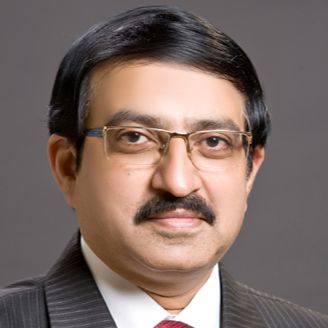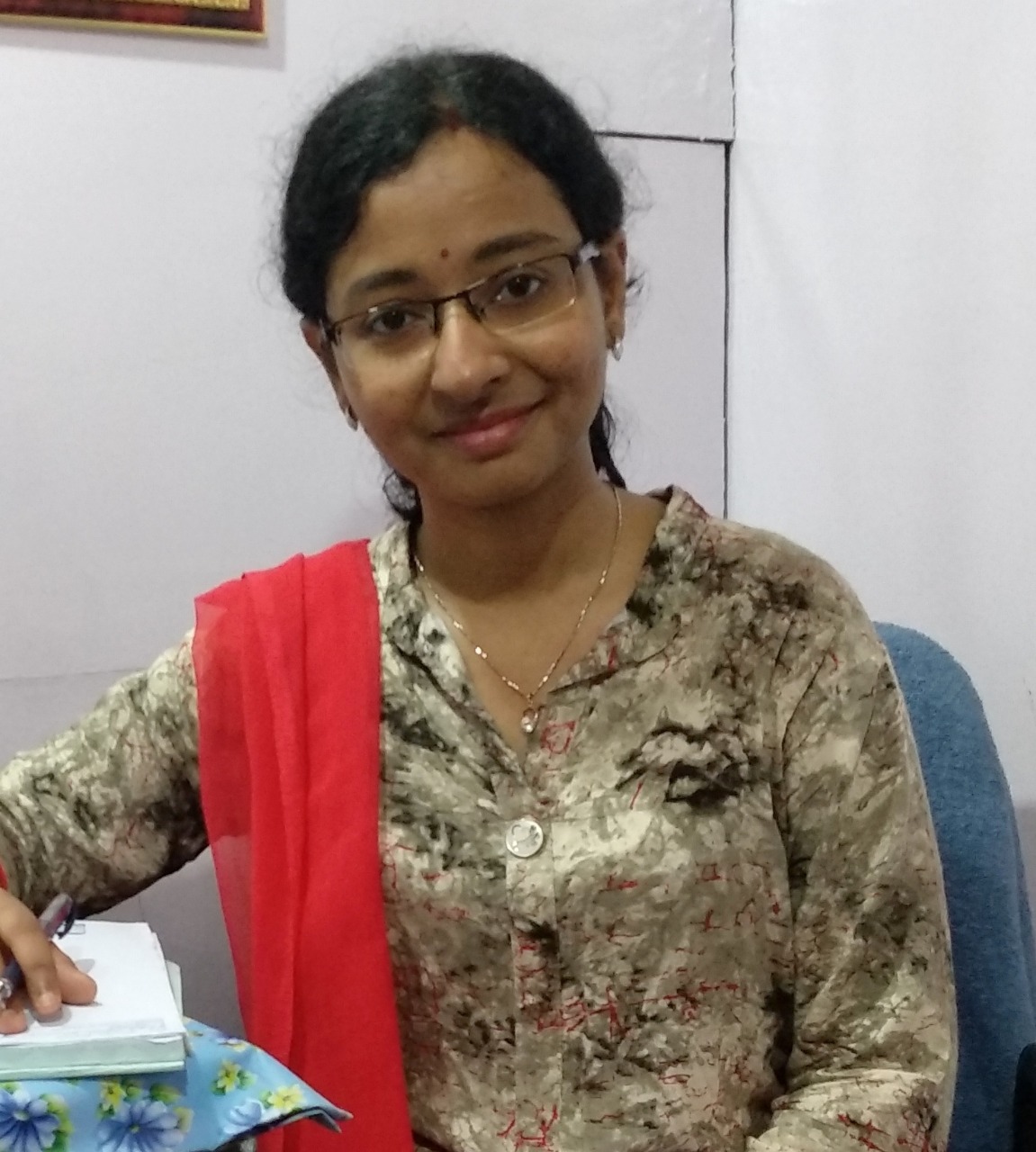1. Science behind Multifocal Intraocular Lens (MFIOL)
Multifocal intraocular lenses are IOLs which can separate incoming light into two or more foci, thus resulting in multiple coexisting retinal images. At any given point, only one of the images (distance, intermediate or near) is the sharpest, and hence selected by the brain for visualisation. This concept is known as simultaneous vision.
The visual system in any mammal is not known to be multifocal, hence the implantation of these IOLs initiate a process of neuroadaptation in the recipient’s brain, and its best effect is seen only after some days to weeks. The splitting of light to form multiple images leads to loss of contrast for each image. However, despite these limitations, MFIOLs continue to be one of the best technologies to provide spectacle independence for all distances after cataract surgery.
2. Types of MFIOL
MFIOL can be classified in two ways:
-
Based on focality or the number of foci or images created by the lens: Traditional “multifocal” IOLs were actually bifocal, creating a focus for distance as well as near vision. Newer trifocal IOLs have an additional focus for intermediate vision. A new category called extended depth of focus (EDOF) IOLs produces an elongated focus of vision, which provides distance as well as an intermediate vision over a range.
-
Based on the mechanism of action, MFIOL can be categorized as:
-
Refractive Type: These lenses have annular zones of different refractive powers to provide focus for near and far objects. They are dependent on the size of the pupil to utilize the required zone of lens. Limitations included a high incidence of dysphotopsic symptoms, high intolerance to pupil decentration and large angle kappa, and a significant loss of contrast sensitivity.
-
Diffractive Type: These IOLs are engineered with microscopic steps on its surface with a specific phase delay, usually half a wavelength, following the Huygens-Fresnel principle. Light falling on such a surface is divided into two foci (41% each) for distance and near, while around 18% light is lost to higher order aberrations (HOA).
-
Some diffractive MFIOLS incorporate the technology of apodisation, whereby there is gradual reduction in diffractive step heights from the centre to the periphery, making the lens distance dominating when the pupil size is large; additionally, it also decreases the dysphotopsic symptoms.
Diffractive MFIOLs are less pupil dependent, and show more tolerance to pupil decentration and large angle kappa.
3. Choosing the right patient
As mentioned earlier, MFIOLs are one of the best methods to provide spectacle independence after cataract surgery. However, owing to the need for neuroadaptation, and higher incidence of dysphotopsic symptoms, they are not suited for everyone. Additionally, certain coexisting ocular pathologies (discussed ahead) are relative or absolute contraindications for MFIOLs, and need to be kept in mind. Matching the appropriate patient personality and pathology for the correct MFIOL is the most important step for success of MFIOL implantation.
Factors which need to be considered are age of the patient, job, lifestyle, hobbies, requirement of nighttime driving and psychological profile. Younger patients tend to neuroadapt early, and are generally more satisfied. Nighttime driving leads to more glare and haloes, and MFIOLS are not appropriate for patients who require this regularly. Most important however, is to judge the expectations of the patient. Overly critical patients with an expectation of perfection usually are the most unsatisfied ones. MFIOLs are best suited for patients who are highly motivated for spectacle independence, and are ready to accept some amount of dysphotopsic symptoms initially.
4. Counselling
Counselling is the most crucial pre-operative step for any patient opting for MFIOL. Most of these patients are educated and well informed, and it is essential that they understand what this technology offers and make an informed choice. The possible post-operative glare, haloes and night time dysphotopsia must be explained. They must understand that these will subside with time; however, the process of neuroadaptation may take 3 months to one year.
5. Pre-operative examination
The contraindications for MFIOL are more important to know than its indications. Thorough pre-operative examination helps to rule out the following pathologies, which if present, will lead to a dis-satisfied patient after surgery:
Dry eye & meibomian gland dysfunction (MGD) – The tear film is the first refractive surface of the eye, hence any irregularity here can lead to accentuated symptoms of dysphotopsia. If detected pre-operatively, it must be treated adequately prior to surgery.
Corneal pathologies – Any corneal pathology which causes corneal opacity, scarring, or irregular astigmatism, should be ruled out on slit lamp examination. Any history of corneal based refractive surgery should also be ruled out.
Pupillary abnormalities – MFIOLs require near perfect pupil centration for good efficacy. Hence, patients with abnormal pupillary size or shape, such as corectopia, iris coloboma and iris atrophy are not ideal candidates. Patients with extreme miosis do not attain good near vision, while abnormally mydriatic eyes experience greater amounts of glare and haloes. Pupillary size should be checked in photopic, mesopic and scotopic conditions.
Zonular weakness – Any zonular weakness may lead to capsular bag and IOL decentration in the future, leading to loss of MFIOL efficacy, hence it should be ruled out after slit-lamp examination with full mydriasis.
Glaucoma and other optic nerve pathologies – Well-controlled moderate glaucoma is not a contra-indication; however, patients with progressing disease are not ideal candidates since contrast sensitivity is already low in these patients, which is further decreased by a MFIOL. Intraocular pressure (IOP) should be measured, and visual field is mandated in case of glaucoma suspects.
Macular diseases – Macular diseases are known to reduce contrast sensitivity of the eye, hence a MFIOL is contra-indicated in these patients. A routine pre-operative OCT is recommended before planning for a MFIOL.
Amblyopia and strabismus patients are also not ideal candidates for MFIOL.
6. Pre-operative calculations
Biometry – The primary goal of spectacle independence can only be achieved if there is no or minimal residual ametropia. Hence biometry calculations must be immaculate. Optical biometry, when possible, gives more accurate results. Newer fourth generation formulae such as Barrett’s universal II formula are highly accurate.
Keratometry readings obtained by biometry and corneal topograohy should be comparable. Post-operative stigmatism of more than 0.75 D can affect MFIOL efficacy adversely. Toric MFIOLs should be suggested for these patients.
Corneal topography – To rule out corneal ectatic disorders, calculate corneal curvature, measure pupillary size, etc.
Aberrometry – To look for higher-order aberrations. Coma >0.32 µ has been shown to increase dysphotopsic symptoms post-operatively. Large angle kappa should also be ruled out
7. Surgery
An uneventful surgery is a pre-requisite for MFIOL implantation. The anterior capsulorhexis must be circular and central, and of an optimum size to allow 360 degrees symmetric overlap of the MFIOL. The lens must be implanted in the bag. In the case of toric MFIOL, alignment must be rechecked after removal of the viscoelastic substance. Posterior capsular rupture (PCR) and zonular dialysis are relative contra-indications for MFIOL implantation, hence a three-piece monofocal IOL must be kept handy for such a situation. MFIOL may be placed in case of small PCR which allows in the bag placement of IOL, and small zonular dialysis which can be managed with capsular tension rings (CTR).
8. Management of post-operative complications
The most important thing to remember is to listen to the patient’s complaint and determine the root cause of problems.
Residual ametropia – This has been found to be the commonest cause of dissatisfaction after MFIOL implantation. Pre-operative counselling regarding need for spectacles for concentrated near work mentally prepares the patient for such a situation. If the residual ametropia is large, options are given to the patient for spectacle or contact lens use, laser vision correction, and IOL exchange, depending on the severity of the problem.
Dry eye – The commonest cause of dysphotopsic symptoms, it must be detected and managed early. Patient should be reassured regarding the temporary nature of the problem
Dysphotopsia – (Dealt separately later)
Posterior capsular opacity (PCO) – Even early PCO may cause visual problems in MFIOL patients, hence an early Nd:YAG capsulotomy may be required.
9. Dysphotopsia and its management
Dysphotopsia following MFIOL implantation can be of the following types:
Glare – Overall excessive and disturbing brightening of the field of vision is known as glare. This is caused due to increased scattering of light by the MFIOL.
Halo – Concentric ring around illuminated objects; these are caused by higher order aberrations.
Negative and positive dysphotopsia – As rays of light are refracted from their path by a MFIOL, a shadow is created on the retina in their original path of light, whereas a central area is illuminated more, leading to negative and positive dysphotopisas respectively.
Management is based on these lines:
Reassurance – Patient has to be reassure. Neuroadaptation takes place mostly by 3-6 months, and removes most of the disturbing symptoms.
Medical management – Pupillary size abnormalities may be managed with topical medications such as cyclopentolate (for miosis) and brimonidine tartarate 0.2% (for mydriasis).
Argon laser iridoplasty – Improves symptoms in patients with lens decentration, miosis, and negative dysphotopsia.
IOL exchange – Reserved for severe, refractory cases, where dysphotopsia interferes with activities of daily life.
10.MFIOL in special situations
Femtosecond laser assisted cataract surgery (FLACS) – Use of femtosecond laser has been shown to produce predictable centered, circular anterior capsular openings, with symmetric IOL overlap, thus improving the long term efficacy of MFIOL.
Paediatric cataract – Use of MFIOLs in the pediatric age group has been supported in the literature, citing the stimulation of both distance and near vision, reducing the tendency towards amblyopia. However, at present, biometric calculations remain a major issue.
Monocular MFIOL – For best results, MFIOL is always recommended to be implanted bilaterally. However, occasionally, it may be used unilaterally, particularly for a young patient with unilateral cataract.
Suggested reading:
- Alio J, Plaza-Puche AB, Férnandez-Buenaga R, Pikkel J and Maldonado M. Multifocal Intraocular Lenses: An Overview. Surv Ophthalmol. 2017;62(5):611-634.
- Braga-Mele R, Chang D, Dewey S, Foster G, Henderson BA, Hill W et al. Multifocal Intraocular Lenses: Relative indications and contraindications for implantation. J Cataract Refract Surg. 2014:40:313-322.
- Sachdev GS, Sachdev M. Optimizing outcomes with multifocal intraocular lenses. Indian J Ophthalmol. 2017;65:1294-300.
- De Vries NE and Nuijts RM. Multifocal intraocular lenses in cataract surgery: Literature review of benefits and side effects. J Cataract Refract Surg. 2013;39:268-278.
- Liu JW and Haw WW. Optimizing outcomes of multifocal intraocular lenses. Curr Opin Ophthalmol. 2014;25:44-48.
- Breyer DR, Kaymak H, Ax T, Kretz FT, Auffarth GU and Hagen PR. Multifocal Intraocular Lenses and Extended Depth of Focus Intraocular Lenses. Asia-Pac J Ophthalmol. 2017;6:339-349.

